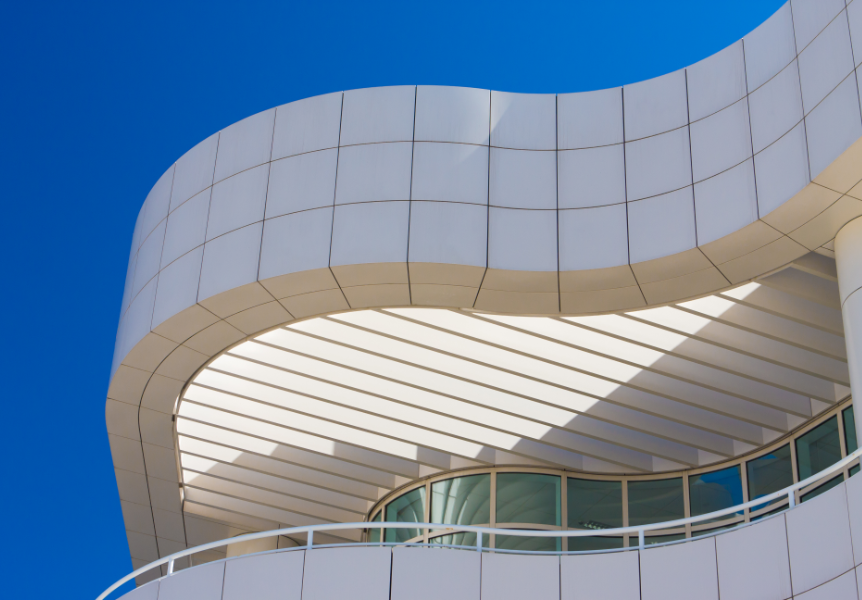Imagine waking up on the Moon or Mars. You step out of bed, float slightly in low gravity, and walk through a dome-shaped structure built to protect you from extreme temperatures and cosmic radiation. This may sound like science fiction, but thanks to innovations in space architecture, it's quickly becoming a reality.
As space architecture advances, the need for safe and sustainable living environments beyond Earth grows. Space architecture plays a critical role in supporting long-term missions, space tourism, and even future colonization of other planets. In this blog, we’ll explore what space architecture is, why it's important, the challenges it addresses, and how it might influence life here on Earth too.
What Exactly Is Space Architecture?

Space architecture is the design and construction of habitats and systems that support human life in outer space or on other celestial bodies like the Moon and Mars. It blends multiple disciplines—architecture, aerospace engineering, psychology, and environmental science—to create safe, functional environments for off-world living.
How It Differs from Traditional Architecture:
- Designed for microgravity or reduced gravity
- Must protect against radiation and temperature extremes
- Requires closed-loop systems to manage air, water, and waste
- Emphasizes psychological comfort and isolation management
The goal is to make living off-Earth not only possible but sustainable and humane.
Why Space Architecture Matters

With the increasing reality of Moon missions, Mars colonization, and orbital hotels, designing life beyond Earth is more than a futuristic dream—it’s a growing necessity. Space architecture is crucial to making these efforts viable.
Why it’s so important:
- Earth faces major challenges like overpopulation, resource scarcity, and climate change
- Long-term space missions demand sustainable living environments
- The rise of commercial space companies like SpaceX and Blue Origin increases demand for livable space habitats
- Astronauts and space tourists need physically and mentally healthy environments
Without proper habitat design, long-duration space missions may become dangerous or unsustainable.
Challenges of Designing for the Final Frontier

Building structures on Earth is hard enough. In space or on other planets, it becomes significantly more complicated due to the harsh environment and limited resources.
Major design challenges include:
- Gravity limitations: Structures must be functional in microgravity (like the ISS) or in reduced gravity, such as on Mars.
- Radiation exposure: Without Earth’s atmosphere and magnetic field, habitats must shield inhabitants from harmful radiation.
- Temperature extremes: Environments like Mars and the Moon face huge swings between hot and cold.
- Logistics and materials: Launching building materials into space is costly. That’s why there’s growing interest in in-situ resource utilization (ISRU) using local materials like Martian soil or lunar dust.
- Psychological strain: Living in isolation and confinement for months can affect mental health. Space architecture must account for privacy, lighting, and social interaction.
These issues make space habitat design one of the most complex but exciting areas of innovation today.
Real-World Examples of Space Habitat Design
Organizations around the world are already working on space habitat prototypes that could one day house astronauts and civilians on other planets.
Here are a few promising projects:
- Mars Dune Alpha: A 3D-printed Mars simulation habitat in Texas, developed by ICON and designed by BIG (Bjarke Ingels Group). It focuses on sustainability and comfort for long-term missions.
- Moon Village (ESA): The European Space Agency envisions a collaborative lunar base for international use, aiming to advance science and exploration on the Moon.
- MARSHA by AI Space Factory: A vertical, 3D-printed Martian habitat optimized for privacy, natural light, and space efficiency. It uses Martian regolith as a core material.
These concepts use cutting-edge technologies like 3D printing, AI in design, and modular building systems, making space architecture increasingly realistic.
How Earth Benefits from Space Architecture
Interestingly, the innovation happening in space design doesn’t stay in space. It’s also helping us solve problems here on Earth.
Practical applications on Earth:
- Disaster relief shelters: Portable, quickly assembled units inspired by space habitats are ideal for emergencies.
- Eco-friendly construction: Closed-loop systems used in space influence green building practices on Earth.
- Resilient housing: Ideas used for lunar or Martian environments are being adapted for deserts, polar regions, and disaster-prone areas.
- Energy-efficient buildings: Space habitats focus on energy conservation, offering lessons for building low-energy homes on Earth.
In many ways, designing for Mars is helping us design smarter for Earth.
The Future of Life Beyond Earth
The vision of humans living off-planet is becoming more realistic every year. Space agencies and private companies are investing in long-term infrastructure to make it happen.
What’s next in space architecture?
- Permanent Moon bases as hubs for exploration, mining, and tourism
- Mars settlements with sustainable energy, food, and air systems
- Space hotels and commercial stations in Earth’s orbit
- Advanced design using robotics, AI, and 3D printing
With leadership from companies like NASA, SpaceX, Blue Origin, ICON, and AI Space Factory, the dream of space cities could become reality within a few decades.
Conclusion:
Space architecture is no longer just a concept in science fiction. It’s a real, rapidly evolving discipline that’s helping us prepare for life in environments far beyond Earth. From radiation-proof habitats on Mars to inflatable hotels in orbit, the future of design is reaching into space.
At the same time, these innovations are feeding back into how we build homes, shelters, and cities on Earth—more sustainable, more resilient, and more adaptable. As humanity prepares to take its next big leap, designing life beyond Earth will define not just how we survive—but how we thrive.







